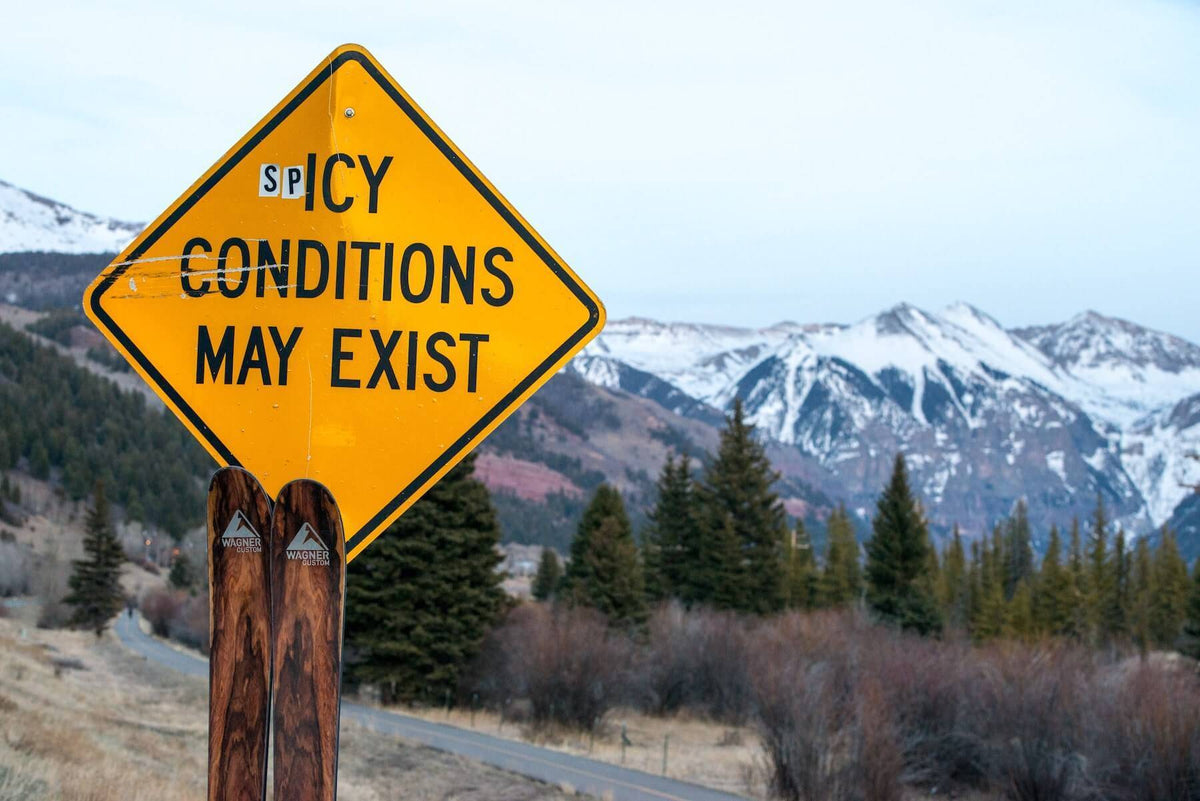
How to Store Your Gear Over the Summer
Here we are again, at the end of another (epic) winter of skiing. So, let's talk about how to best store your gear for the off-season. Believe us–it will be worth it when you pull them back out in the fall.
The transition from winter to spring can often seem endless, but the transition from spring to summer seems overnight. If you are like us, you often keep your skis easily grab-able throughout spring in case your favorite resort is still open or your friends encourage a ski tour.
When summer turns on, it’s easy to forget about your skis (especially when they end up in the corner of your garage or storage space). But, before you put your skis and boots away for the summer, take a few minutes to store them properly. It will be worth it when you pull them back out in the fall.
SKI STORAGE
The big issue is oxidation. We want to prevent rust on the edges and “dry rot” (a powdery-white appearance) of the polyethylene bases. Yes, polyethylene, if left to dry out, does oxidize – if air gets into the microscopic pores, the long molecules that make the bases so tough can break into smaller strands, reducing the strength and even the glide speed of this expensive material. So, here is the plan:
1) Use a damp rag to wipe down your skis and bindings (little citric-based cleaner won’t hurt). Remove all road salt, dirt and grime that linger from those last sunny days of your ski season.
2) Use a clean dry rag to dry them off, top and bottom. If sharp “splinters” of topsheet material along the top edges grab the rag, trim those loose ends off with a sharp knife or a bit of sandpaper. A smooth top edge won’t cut your fingers as you handle the skis and may prevent further delamination of the topsheet.
3) Look for any obvious issues on the edges and bases. (See below.) Run a finger along the steel edges and a palm along the base. Look for roughness of the edges, discoloration, and any whiteness on the bases.

A close-up example of both base oxidation and rusting edges.
4) Using a diamond stone, polish away any burrs on the ski edges. Rust beginning here will go deeper than into a smooth surface and be harder to grind away later. In the long run, rusted burrs will require deeper grinding and shorten the useful life of the ski.
5) Similarly, repair any gouges in the polyethylene bases. Using a waxing iron, coat the bases and edges with a thick layer of soft “summer” wax. (If you don’t have warm-weather wax handy, any wax will do to prevent oxidation. Any wax is better than a dry base).
6) Leave the wax on your skis through the summer months. You can scrape and brush the bases before your first run next winter.
7) Fasten the skis together with two velcro ski straps, one toward the tips and one toward the tails. The foam section should sit between the ski bases to protect the steel edges from scissoring against each other, and the velcro can be wrapped around your skis tightly. Store skis in a dry, shaded and well-ventilated location.
8) Before skiing in the fall, scrape off the (soft) storage wax and iron in a coat of harder or all-purpose glide wax suitable for winter snow.

A pair of skis gets a good grind in our factory.
HERE'S A CHEATER HINT: If you don’t have an iron or wax, consider getting a ski tune before storing your skis for the summer. If you choose this route, ask the shop to dry the skis thoroughly, clean them, repair any damage and polish the edges. This is a good time to have the bases stone-ground. Early winter snow is colder than late spring snow, so ask the shop for a fine, cold-snow structure that will be appropriate for the colder temperature of early winter. Alternatively, if you own a pair of Wagner Skis, you can send them to us for a summer Spa Tune. We will restore your skis to their original factory condition (or as close as possible). Our spa tunes start at $200 and includes the following:
• Repair any base damage
• Grind skis flat
• Restore the factory structure to the bases
• Deburr and sharpen the edges
• Restore factory-specific edge bevels
• Wax, brush and polish
• Clean up the topsheet (buffing out the topsheet-sidewall interface and repairing any cuts)
• Return shipping

This is an extreme example, but bases can be repaired and brought back to life when tuned well.
If our spa tune is of interest (and you own Wagner Skis), buy your skis a spa day here and send your them our way. NOTE: if the links don't work, it means that we've changed our equipment over to ski production – sign up for the newsletter to get the announcement when Spa Tunes are available again.
In any case (do it yourself, Wagner Spa Tune, or a shop tune), your skis should greet winter in a great condition, so you are ready to hit the slopes and charge hard. A few minutes of storage prep each spring guarantees years of top performance from your skis.
Ski Boot Storage
Boots need summer love, too. The polyurethane and polyether plastics used to make high-performance ski boots tend to take on a “set” when left alone for long periods, which means it’s best to store them all buckled up. Otherwise, when you stick your foot in the boot in November, you may find the overlap flaps and cuff straps pointing off in odd directions, and the boot may not fit as well as you remembered. Moreover, a boot stored damp can actually mildew inside (yuck!). So when you’re done prepping your skis for storage:
1) Pull the liner out of each boot and set it aside in a cool dry place to dry thoroughly. Remove the footbed so it can dry, too. Make sure the tongue sits in its normal skiing position, inside the liner. Stuff crumpled newspaper into the liner to absorb moisture and help the liner retain its shape. If the liner has laces, pull them tight.

Take care of your boots and they will take care of you.
2) Clean the plastic shells inside and out using a mild detergent or diluted citric cleaner. Rinse and dry.
3) Check for damage to the shell and cuff. Look for bent buckles, missing screws and canting hinges. Look for cracks in the plastic, especially if the boots are more than five or six years old (even very durable plastics can grow brittle after years in the sun and wind). Look carefully at wear on the boot soles, especially at the toe and heel where the boot interfaces with bindings. If the soles are badly worn, especially if worn asymmetrically, it can adversely affect binding release function. Where outsoles are replaceable, check the condition of the screwheads holding them to the main shell. You’ll want to replace the outsoles before those screwheads are worn off.
4) Where damage needs to be repaired, consult your bootfitter or another expert ski shop. Most buckles can be replaced, some cracks can be welded, and many outsoles can be replaced.
5) Store boots in a dark, cool, dry place.
With these ski and boot summer storage tips, you’ll be thankful you took the time to put everything away properly come winter!
--









